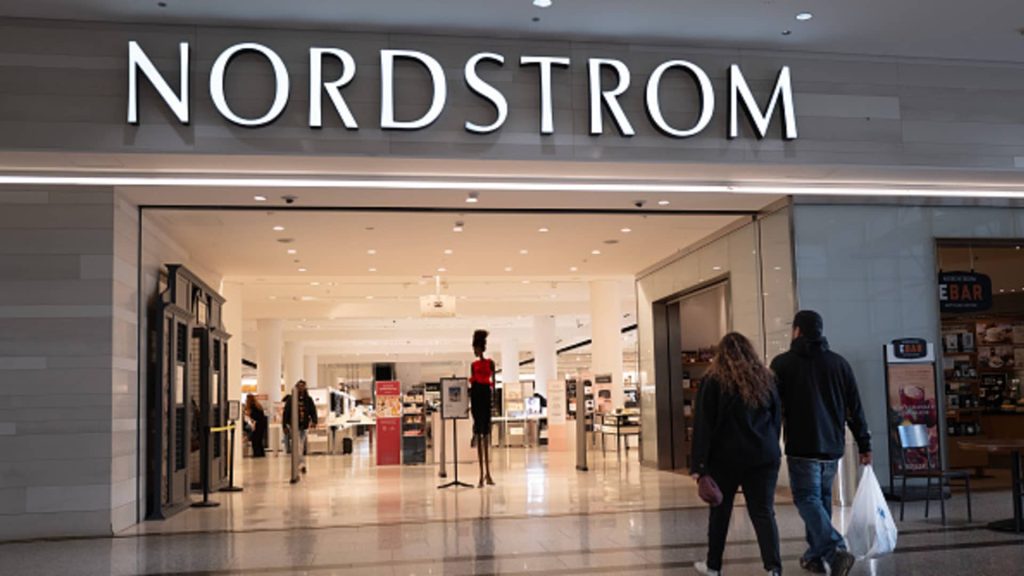A sign marks the location of a Nordstrom store in a shopping mall on March 20, 2024 in Chicago, Illinois.
Scott Olson | Getty Images
Department stores may be falling out of favor with today’s younger consumers, but there’s a reason older shoppers keep coming back.
Whether it’s more generous return policies, promotional events or deep discounts, “if you can learn the benefits of what a store brings you, it creates a much greater experience,” said Marshal Cohen, chief retail advisor for market research firm Circana.
For example, if a sales associate doesn’t have an item you want in stock, often they’ll get it and ship it to you at no cost, Cohen said — “that’s a big perk.”
And yet, for younger shoppers, the mentality is “I don’t want to shop where my mother shops,” he said.
‘The tiktokification of retail’
To be sure, at Macy’s and its subsidiary Bloomingdale’s, for example, the majority of customers are above the age of 45, according to new Consumer Edge data.
Baby boomers are also much more likely to say in-store shopping is their most common way of making purchases, compared with Generation Z, or those born between 1997 and 2012, according to a Capital One report from March.
“The younger generation grew up online,” Cohen said. “The challenge for department stores is to break that paradigm.”
Social media plays a big role in how younger consumers make purchases, added Oliver Chen, a retail analyst at TD Cowen. It’s a trend he refers to as “the tiktokification of retail.”
But while shopping primarily online may seem quick and convenient, it does come with extra hassles.
It can mean relying on a practice known as “bracketing,” or ordering multiple products in different sizes or colors with the intention of keeping a few and returning the rest — adding more time and cost to each transaction.
As online retailers try to keep those returns in check, most have rolled out stricter policies, including charging a return or restocking fee, according to a 2023 report from return management company Happy Returns.
But even now, some department stores have held on to the more generous policies of yesteryear, with longer return windows or free shipping, and that has gone a long way when it comes to building brand loyalty.
“There are some savings opportunities that you have when you shop in person that you probably wouldn’t have online,” said Edgar Dworsky, founder of ConsumerWorld.org.
‘It’s a generational thing’
Pedestrians carry Bloomingdale’s shopping bags while walking in New York.
Craig Warga | Bloomberg | Getty Images
Although Bloomingdale’s shortened its return window to 30 days from 90 days last year, shoppers appreciate the other perks, according to Nancy Quinn, a personal stylist at the flagship store in New York City.
“The biggest thing that Bloomingdale’s offers is customer service, that is really where we shine,” Quinn said.
Quinn meets her clients, who are mostly women between the ages of 45 and 70, by appointment to help them find clothing for everyday or special occasions. She said she will often waive the shipping fee or send the purchases via messenger at no charge to locations in Manhattan. At times, she has even hand-delivered an item — also as a complimentary service — if the customer is local and under a time constraint.
“Those are things that we try to do to make sure people know how much we appreciate the business,” Quinn said. At many high-end department stores, personal stylists work on commission and the assistance they provide is free for customers.
Nancy Quinn is a personal stylist at Bloomingdale’s flagship store in New York City.
Courtesy: Nancy Quinn | @qstylepr
Quinn’s appointments book up especially quickly when Bloomingdale’s runs promotional events, such as “friends and family,” which is typically a 25% discount across many brands.
Still, Quinn says younger customers are less likely to shop with her.
“It’s a generational thing,” Quinn said. “A lot of younger people are shopping online.” Alternatively, “the women I am meeting are really ready to make an investment in themselves and their wardrobe.”
Wealthy shoppers give stores a boost
To be sure, U.S. department stores have been in a slump for years. Retailers like JCPenney and Macy’s have struggled to compete against online retailers and smaller brick-and-mortar stores that can better adapt to changing consumer preferences.
“Small new brands that are emerging have just as much marketing power because the internet levels the playing field,” said Circana’s Cohen.
However, department stores aren’t dead yet.
Last year, Macy’s said it would close some of its namesake stores and open more Bloomingdale’s locations. According to the company’s quarterly report, Bloomingdale’s performed better because of its focus on the luxury brands that appeal to higher-income shoppers.
“Selective higher-end stores” are outpacing the competition, in part because “middle- and lower-income consumers have been disproportionately negatively impacted by the rising cost of necessities,” said TD Cowen’s Chen.
In an interview last month, Macy’s CEO Tony Spring told CNBC that the consumer remains resilient and continues to spend on new items and fashion, despite concerns about tariffs.
The challenge for department stores is to bring shoppers in, even as managing inventory and pricing gets increasingly difficult, Chen said. “It is ironic because everybody does love stores and humans want connection.”

